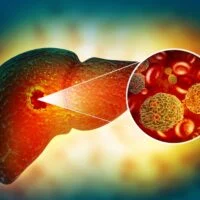As the new year unfolds, Oregon confronts an alarming public health challenge that echoes the difficulties of a bygone era. The resurgence of dysentery, primarily driven by the Shigella bacteria, has rapidly sickened dozens across the state, particularly affecting the Portland Metro area. This outbreak not only revives historical anxieties but also casts a stark light on modern-day vulnerabilities within our communities. What could be causing this sudden surge, and more importantly, what can be done to curb its spread?
Background of the Outbreak
The dysentery crisis currently unfolding in Oregon is not an isolated event but part of a troubling trend observed over the past decade. Since 2012, the state has witnessed a gradual increase in cases of shigellosis, an intestinal disease caused by the Shigella bacteria. This bacteria leads to severe symptoms, including diarrhea, fever, and stomach pain, culminating in the condition commonly known as dysentery.
The recent spike in incidents marks a concerning escalation. As of early 2025, public health officials have reported 40 new cases, predominantly centered in Multnomah County, an area that has become a hotspot for this infectious ailment. The infections began to proliferate significantly around the spring of 2024, attributed to a strain of Shigella sonnei introduced into Oregon’s population. From there, it swiftly moved through the community, affecting both housed and unhoused residents, reflecting a broader issue of public health management and social welfare.
Current Situation

As of January 2025, Oregon’s battle with dysentery has reached a critical juncture. The Shigella outbreak has escalated, particularly within Multnomah County, where a significant proportion of the cases have been reported. Health officials have identified over 14 distinct subclusters of the infection, indicating multiple pathways of transmission across various groups within the community.
The statistics are sobering, with nearly 200 cases of this particular Shigella strain reported nationally, but a staggering 61 percent of these cases are concentrated in Multnomah County alone. This localized surge suggests a deeper, systemic issue within the region, particularly in terms of public health infrastructure and community living conditions.
Preliminary data from February 2025 suggests a slight decrease in new cases compared to January, but the situation remains fluid and uncertain. Health authorities are vigilant, continuously monitoring the outbreak’s progression and responding to the dynamic nature of the spread. This ongoing vigilance is critical as the community braces for potential new waves of the infection and seeks to implement effective containment strategies.
Transmission and Risk Factors

Understanding how Shigella spreads is crucial to controlling the dysentery outbreak in Oregon. Shigella is highly contagious, capable of spreading through even minimal contact with the bacteria. It primarily transmits via the fecal-oral route, meaning that ingestion of contaminated food or water, or direct contact with contaminated surfaces, can lead to infection. This mode of transmission underscores the critical importance of hygiene practices such as regular handwashing and safe food handling.
In Multnomah County, the outbreak’s epicenter, specific risk factors have exacerbated the spread of dysentery. Notably, a significant number of cases have been linked to the homeless population, who often lack access to adequate sanitation facilities. This connection highlights a stark reality: those without stable housing are at a heightened risk of contracting diseases like shigellosis. The transient nature of homeless encampments and the limited access to clean water and toilets create environments where Shigella can thrive and spread rapidly.
The outbreak has been prevalent among groups that have close physical contact, including within social networks that share living spaces or participate in communal activities, such as drug use. Reports indicate that transmission among people who use drugs, as well as through sexual contact, accounts for a substantial portion of the cases. These pathways reflect broader public health challenges, including the need for targeted interventions that address the specific circumstances of affected communities.
Health officials have also noted that some cases are linked to international travel, particularly to regions where Shigella is more prevalent. However, the majority of infections appear to have been acquired locally, suggesting that community transmission within Multnomah County is the primary driver of the outbreak.
Impact and Response

The impact on individuals and families, especially those in vulnerable conditions such as homelessness or limited access to sanitation, has been profound. Dr. Amanda Risser, a senior medical director for a local health care and housing services agency, emphasized the challenges faced by the unhoused population: “Any situation where [you are] unable to wash your hands regularly will put you at risk for [the bacteria which causes dysentery] shigella, and I think unsheltered homelessness certainly contributes to people just really not having places to do that.”
In response to the escalating situation, local health departments have ramped up their efforts. They have initiated educational campaigns, emphasizing the importance of hygiene and public sanitation. “If you want to stop an outbreak of shigella, you give people toilets and soap and water,” stated Dr. John Townes, medical director for infection prevention and control at Oregon Health & Science University, highlighting the basic yet crucial measures needed to combat the spread.
The local response has also included more strategic interventions. According to health officials, providing temporary housing for those affected has been one of the most effective strategies. This not only helps to isolate cases but also provides affected individuals with the necessary resources to maintain hygiene and receive medical care. The health department has underscored this approach, explaining, “Housing is related to nearly all aspects of health, including infectious diseases. Lacking housing creates a context that can increase the risk of multiple kinds of infectious disease.”
Moreover, the outbreak has sparked discussions and initiatives aimed at improving public infrastructure, such as increasing the number of accessible public restrooms and ensuring they are operational year-round to prevent similar outbreaks in the future. These efforts reflect a growing recognition of the link between public health and social determinants such as housing and sanitation.
Prevention and Control Measures

In response to the dysentery outbreak in Oregon, particularly in the Multnomah County area, health officials have implemented a series of prevention and control measures aimed at curbing the spread of Shigella and mitigating its impact on the community.
Educational Initiatives: One of the primary strategies has been to increase public awareness about the modes of transmission and the importance of hygiene. The Multnomah County Health Department has rolled out educational resources that instruct residents on how to avoid contracting and spreading the disease. These include advising against preparing food for others if symptomatic, avoiding communal swimming areas, and limiting physical contact when an outbreak is known.
Hygiene Facilities: Recognizing the significant link between hygiene and the spread of Shigella, local health authorities have emphasized the importance of accessible sanitation facilities. Efforts to provide more public restrooms and handwashing stations, especially in areas with high homeless populations, are crucial. These facilities are intended to help reduce the fecal-oral transmission among the community.
Targeted Interventions for At-Risk Populations: For populations particularly vulnerable to the outbreak, such as the unhoused or those in close living conditions, the health department offers additional support. This includes providing temporary housing to help stabilize living conditions and reduce the risk of disease spread.
Workplace Restrictions: In sectors where hygiene is paramount, such as food service, childcare, and healthcare, individuals showing symptoms of Shigella infection are restricted from work until they can prove they are no longer contagious. This measure is critical to prevent the amplification of an outbreak that could occur in these sensitive environments.
Medical Intervention: For those infected, prompt medical treatment is crucial. While Shigella is often self-limiting, severe cases may require antibiotics. However, the rising concern of antibiotic resistance means that treatment options need to be carefully considered and administered only when necessary.
Community Collaboration: Finally, controlling an outbreak of this nature requires cooperation from the entire community. Public health officials continue to work closely with community leaders, healthcare providers, and residents to implement effective strategies tailored to the specific needs and challenges of the affected areas.
Public Health Strategies Post-Outbreak
As Oregon grapples with the ongoing dysentery outbreak, the experience offers crucial insights into the dynamics of infectious disease management and the interconnectedness of public health and societal well-being. The outbreak has not only challenged local health systems but has also highlighted the resilience and adaptability of the community in facing public health crises. Moving forward, it is imperative that lessons from this outbreak inform improvements in public health infrastructure, with a particular focus on addressing the needs of the most vulnerable populations. Strengthening community resilience, enhancing sanitation facilities, and fostering broad-based health education are pivotal steps towards safeguarding public health against future outbreaks. By embracing a comprehensive and inclusive approach, Oregon can hope to mitigate the impact of such public health challenges and ensure a healthier future for all its residents.



